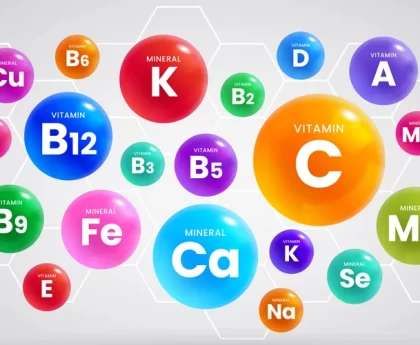Heart Attack: medically known as a myocardial infarction, occurs when there is a sudden and severe interruption of blood flow to a part of the heart muscle. This interruption usually happens due to a blockage in one or more of the coronary arteries, which are responsible for supplying oxygen-rich blood to the heart muscle.
The blockage is typically caused by the buildup of fatty deposits (plaque) on the inner walls of the coronary arteries, a condition known as atherosclerosis. When a plaque ruptures or a blood clot forms within a narrowed artery, it can obstruct blood flow, leading to damage or death of a portion of the heart muscle.
Types of Heart Attack
There are two main types of heart attacks: ST-segment elevation myocardial infarction (STEMI) and non-ST-segment elevation myocardial infarction (NSTEMI). These classifications are based on specific changes observed on an electrocardiogram (ECG) and the severity of the blockage in the coronary artery. In addition to these two main types, there is also a term called “unstable angina,
which is a condition closely related to heart attacks.
- ST-Segment Elevation Myocardial Infarction (STEMI): In a STEMI heart attack, there is a complete blockage of a coronary artery, resulting in a significant portion of the heart muscle being deprived of blood and oxygen. This type of heart attack is considered more severe and requires urgent medical intervention. The “ST-segment elevation” on the ECG indicates the extent of damage. STEMI heart attacks often require immediate treatment such as thrombolytic therapy (clot-busting medication) or percutaneous coronary intervention (PCI) to restore blood flow to the affected artery.
- Non-ST-Segment Elevation Myocardial Infarction (NSTEMI): In an NSTEMI heart attack, there is a partial blockage of a coronary artery, resulting in less severe damage to the heart muscle compared to a STEMI. The “non-ST-segment elevation” on the ECG indicates the extent of the blockage. NSTEMI heart attacks also require medical intervention and may involve medications, angioplasty, or other procedures.
- Unstable Angina: Unstable angina is a condition where there is chest pain or discomfort caused by reduced blood flow to the heart muscle. It is considered a precursor to a heart attack and can be a warning sign that a heart attack may be imminent. Unlike a heart attack, unstable angina does not cause permanent damage to the heart muscle. However, it requires medical evaluation and treatment to prevent the condition from progressing to a more serious event.
It’s important to note that while these are the main classifications, the distinction between STEMI and NSTEMI is not always absolute, and the specific treatment approach can vary based on the individual’s condition and the medical resources available.
Prompt medical attention is crucial if you suspect you are experiencing any symptoms of a heart attack or unstable angina. Only a medical professional can accurately diagnose the type of heart event and determine the appropriate course of treatment.

Symptoms of Heart Attack
The symptoms of a heart attack can vary from person to person and may differ between men and women. It’s important to recognize these symptoms and seek medical help immediately if you suspect you or someone else is experiencing a heart attack.
Common symptoms of a heart attack include:
- Chest Pain or Discomfort: Most heart attacks involve discomfort in the center or left side of the chest. The sensation may be described as pressure, fullness, squeezing, or pain. It can last for a few minutes or come and go.
- Pain in Other Areas of the Upper Body: The pain may radiate to the arms (usually the left arm but can also affect the right arm), neck, jaw, back, and stomach.
- Shortness of Breath: You may experience difficulty breathing, rapid breathing, or a feeling of being unable to catch your breath. This can occur with or without chest discomfort.
- Cold Sweat: Sudden, unexplained sweating, often described as a “cold sweat,” can be a symptom of a heart attack.
- Nausea and Vomiting: Some people may feel nauseated or vomit during a heart attack.
- Fatigue: Unusual and unexplained fatigue or weakness, often more pronounced than normal tiredness.
- Dizziness or Light-headedness: Feeling dizzy or lightheaded can be a symptom, especially if accompanied by other symptoms.
- Unexplained Anxiety: A feeling of impending doom, anxiety, or a sense that something is terribly wrong.
- Heartburn-like Sensation: Some people may mistake a heart attack for indigestion or heartburn, as the symptoms can be similar.
- Pain or Discomfort in the Lower Jaw or Throat: Some heart attacks can cause discomfort in the lower jaw or throat area.
- Unusual Pain or Pressure: You might experience unusual pain or pressure in the upper back, between the shoulder blades, or in the upper abdomen.
It’s important to note that not everyone will experience all of these symptoms, and some people may have atypical or milder symptoms, especially women, older adults, and those with diabetes. If you or someone else is experiencing symptoms that could indicate a heart attack, do not ignore them. Call emergency services or seek medical attention immediately. Prompt treatment can significantly improve the outcome and reduce the risk of complications.
Prevention Of Heart Attack
Preventing a heart attack involves making healthy lifestyle choices and managing risk factors that contribute to heart disease.
Here are some key steps you can take to reduce your risk of a heart attack:
- Healthy Diet: Adopt a balanced diet that includes plenty of fruits, vegetables, whole grains, lean proteins (such as fish, poultry, and legumes), and healthy fats (like olive oil and nuts). Limit saturated and trans fats, sodium, and added sugars. A heart-healthy diet can help control cholesterol levels, blood pressure, and weight.
- Regular Exercise: Engage in regular physical activity most days of the week. Aim for at least 150 minutes of moderate-intensity aerobic exercise (such as brisk walking, cycling, or swimming) or 75 minutes of vigorous-intensity exercise (such as running or high-intensity interval training) each week.
- Maintain a Healthy Weight: Achieve and maintain a healthy weight through a combination of a balanced diet and regular exercise. Excess weight, especially around the abdomen, is a risk factor for heart disease.
- Manage Stress: Practice stress-reducing techniques such as deep breathing, meditation, yoga, and relaxation exercises. Chronic stress can contribute to heart disease risk.
- Quit Smoking: Smoking is a major risk factor for heart disease. Quitting smoking reduces your risk of heart attack and improves overall health.
- Limit Alcohol: If you drink alcohol, do so in moderation. For men, this generally means up to two drinks per day; for women, it’s up to one drink per day.
- Control Blood Pressure: Monitor your blood pressure regularly and take steps to keep it within a healthy range. Lifestyle changes and medications can help control high blood pressure.
- Manage Cholesterol: Keep your cholesterol levels in check by following a healthy diet, exercising, and taking any prescribed medications as directed by your healthcare provider.
- Control Diabetes: If you have diabetes, work with your healthcare team to manage your blood sugar levels and overall health.
- Medication Compliance: If you’re prescribed medications to manage conditions like high blood pressure, high cholesterol, or diabetes, take them as directed by your doctor.
- Regular Checkups: Schedule regular checkups with your healthcare provider to monitor your overall health, manage risk factors, and detect any potential issues early.
- Know Your Family History: Be aware of your family’s history of heart disease and other cardiovascular conditions, as genetics can play a role.
- Stay Informed: Stay educated about heart health and stay updated on guidelines for prevention and treatment.
Remember that making small, sustainable changes over time can have a significant impact on your heart health. It’s important to consult with your healthcare provider before making any major changes to your lifestyle or starting a new exercise regimen, especially if you have pre-existing health conditions.
Eye Infections: Symptoms, Causes & Treatment
Vertigo: Causes, Symptoms, Treatment & Preventive
Hair Loss, Types, Symptoms, Prevention & Treatments
Knee Pain, Symptoms, Types & Self Management
Headaches: Details, Types, Causes, Symptoms & Treatment
Obesity: Definition, Types, Prevention & Treatment
Read this Article Also:- 10 Incredible Natural Blood Thinners for Optimal Heart Health!
If you don’t like this article/post please share your feedback.




